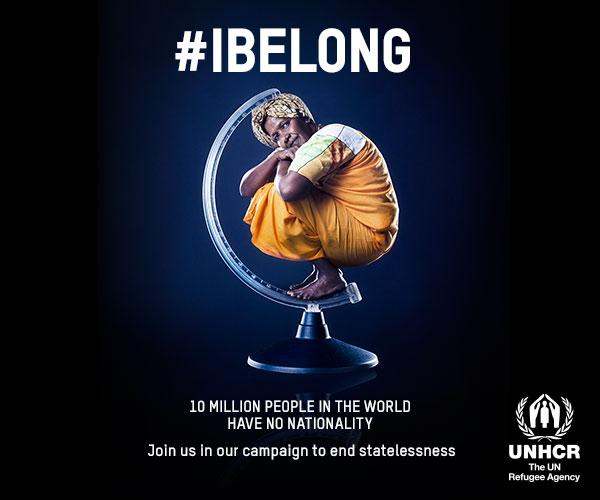West Sudan: Biographic Narratives of Working Women of Kebkabiya – Towards a New Methodology
Karin Willemse’s One Foot in Heaven: Narratives on Gender and Islam in Darfur, West-Sudan is a highly theoretical, complex, 547-page long book by a Dutch feminist anthropologist who did about one year and a half of field work in Kebkabiya (Dar Fur) between 1990 and 1995. Practically all feminist anthropological studies of women and/or gender in Sudan (by scholars such as Abdullahi Ibrahim, Amal Fadlallah, Victoria Bernal, Stephanie Beswick and Jay Spaulding, Janice Boddy, Sondra Hale, and others) have striven to carefully conceptualize their approach and contextualize the women (and/or men) they studied. However, while Willemse’s book belongs to this small but high-quality body of scholarly work, it is at the same time very different, for it is first of all (even if not only) a book about the feminist epistemology and methodology of women’s biographic narratives.

Willemse had initially hoped to study female labor migrants in Dar Fur, but a range of political and security factors made this impossible. She decided to study working women in Kebkabiya instead and, in the course of time, came to focus on the “˜narratives of self’ of two particular women, a market woman she calls Hajja and a teacher she calls Umm Kalthoum. Having to give up her original research focus turned out to be productive, she writes, for it was the reason why “I was able to focus more on the nature of communication than on pre-supposed meanings and expected outcomes” (24). Thus the focus of this study is knowledge production, namely the production (or better, the co-production) of knowledge by the anthropologist and her research assistants on the one hand and the working women who related their biographic narratives to them on the other. It is one of Willemse’s main goals is to discover how working women in Kebkabiya situated themselves and each other in relationship to the Sudanese government’s dominant Islamist discourse on gender in that particular place and that moment of time.
However, Willemse is not just applying the methodology of listening to, analyzing, and representing women’s biographic narratives, in the course of this book she also devises a methodology to do so by drawing on (and going beyond) some of the most complex feminist theorists of the last twenty years. Moreover, she does not only tell her readers about this methodology but shows step by step how listening, reading and writing against the grain is put into practice. Thus Willemse does at least three things at the same time. First, she develops the theoretical underpinnings of this methodology, situating it in theoretical scholarship of different kinds (such as discourse analysis, feminist theory, and critical Islam studies). Second, she explains how she used and refined it in dialectical tension with the biographic narratives of women it was intended to elucidate. Third, she shows what it has yielded in terms of these narratives as they were coproduced, in a very specific set of contexts, by the narrators and the anthropologist and her research assistants. To my mind, this is an incredible feat.
Moreover, given the emphasis on knowledge production, Willemse adopts an unorthodox representation of her research. “The focus on the process of knowledge production rather than only on its outcomes, on dynamics, contexts and subtexts rather than facts does not allow for an orthodox representation,” she writes (32). Thus her study is not chronologically organized or based on hypotheses to be proven or disproved but is written up as “a process of evolving and “˜becoming'” and of “theoretical discovery” (32). This process, which Willemse calls “listening, reading, and writing against the grain,” involves a series of readings and re-readings — analyses and re-analyses, write-ups and further write-ups, conclusions and new conclusions — of the biographic narratives in question. The result is a book that is on the one hand a true tour de force and a deeply impressive achievement and, on the other hand, also a fiendishly complex and even unwieldy study.
Willemse adopts a form of discourse analysis by presenting three different levels of analysis of every narrative or segment of narrative in the book. First she represents the narrative as she first recorded it. Then she presents an analysis of the immediate context (spatial, temporal and otherwise) of the narrative so that the readers can understand it. Third, she analyzes it from her own analytical perspectives and understandings, relating it to her own theoretical and methodological interests in how the narrators situated themselves and others vis-í -vis the dominant moral discourse of Sudan’s Islamist government. This third level, her analysis and description of how her own understanding of the narrators and narratives evolved over time, is a crucial part of the methodology. Moreover, Willemse does not represent this evolving process by applying it to the one set of texts (the texts with which she begins) but to an ever-expanding set of new narratives. This makes her scholarly narrative so intensely dynamic that it becomes a real challenge to the reader.
There is only one still point, one subject-matter that is not mobile or dynamic in the book, namely the dominant moral discourse on gender by the Sudan’s Islamist government. While this is a balm for the mind, it also appears to fly in the face of what Willemse’s methodology is all about. Willemse does not deconstruct the Sudanese government’s dominant moral discourse about gender and thus appears to take it for granted as a category. This is disturbing. Were there no variations, tensions, or changes in the Government’s Islamist discourse on gender as it was produced by a range of actors in the period 1990-1995? How did the Government’s Islamist discourse about gender relate to the religious and other moral discourses on gender before the Islamist turn in the early 1990s? It is hard to imagine how this study could contain another changing variable, but the monolithic and static nature of the dominant moral discourse as presented here is an unexpected and puzzling dimension of the analysis. Though Willemse’s methodology strives to undermine the anthropologist’s authority that willy-nilly shapes all research situations, she is quite authoritative when she claims the centrality of the government’s Islamist discourse to the “˜narratives of self’ of all the working women of her study. She contends that “[t]he subject positions offered by the dominant Islamist discourse were for all of these women the point of reference or the point of departure” (450). We will return to this below.
What, to the mind of this reviewer, can readers learn from this theoretically and methodologically sophisticated book? First of all, in the process of developing her tools of analysis, Willemse introduces and gives concise and lucid definitions and explanations of an enormous range of theoretical concepts, including (biographic) narrative, identity (performed, constructed, prioritized, narrated, contextualized, mapped, and traced),agency and relational agency, experience, difference, discourse, deconstruction, intersubjectivity, intertextuality, intersectionality, subject and object positions, border zone, context, masculinity (in crisis), femininity, resistance, and so forth. Thus she elucidates and further develops concepts developed by Lila Abu-Lughod , Ruth Behar, Judith Butler, R.W. Connell, Teresa De Lauretis, Norman Fairclough, Judith Fetterly, Maaike Meijer, Sarah Mills, Chandra Mohanty, Judith Okely and Helen Callaway, Joke Schrijvers, Dorothy Smith, Judith Zur, and many others. Willemse has a real gift for recognizing the nuggets of gold in the analyses of other scholars and to use these productively in her own analysis. This reviewer found this dimension of Willemse’s work enormously instructive and helpful.
Second, this book contains a number of poignant learning moments that even by themselves would have made this study worthwhile. One such moment is when Willemse comes to realize that it was not just she who had chosen to interview Hajja, one of the two most significant authors of biographic narratives in the book, but that Hajja also had chosen her and had her own objectives as she positioned herself vis-í -vis other people as well as the dominant moral discourse on gender! Another such moment is when Willemse, after almost four years, returns to Kebkabiya with the hope of discussing her analysis with Hajja and of having the latter approve or authorize her anthropological understanding of Hajja’s biographic narrative. She writes:
“What I began to realize was that authorization of a narrative some years after it was constructed was beside the point: a narrative some years after it was constructed was beside the point: a narrative does not exist in itself, but only in the context in which it carried meaning. It had been “˜our narrative,’ time- and place-bound. The narrative contained multiple layers and was open to multiple interpretations. The narrative could not be retrieved from the past of our interaction some four years before.” (247)
A third such moment, finally, is when Willemse acknowledges towards the very end of the book that the centrality of the Islamist discourse in the biographic narratives of the women she interviewed in part resulted from her own intellectual background and interest in the scholarly field of Gender and Islam. These kinds of poignant learning moments punctuate and enrich this dynamic narrative of knowledge production.
Third and finally, the reader will also learn much about female teachers and market women in Kebkabiya as they made active claims on moral womanhood by strategically positioning themselves vis-í -vis the dominant moral discourse.
This 547 page-long book also has drawbacks, some of which have already been noted or hinted at. First, the structure of the book is so complex and has so many different layers , levels, and components that it becomes somewhat inaccessible to the reader. Thus the book does not only present a series of different narratives of the two most important authors of biographic narratives, Hajja and Umm Kalthoum, but also includes chapters on other market women, younger women, and elite men, brought into the analysis to allow the author to broaden her contextualization and understanding of working women’s narrated identities. The accessibility of the book or better, its user friendliness, is also reduced by the author’s many theoretical asides. An example is the 11-page long discussion of the strengths and weaknesses of the terms “˜Islamic fundamentalism’ and “˜Islamism’ (pp. 74-85). There is no doubt that the point the author wants to make — that the term “˜Islamism’ has the drawback of diverting attention away from what many religious fundamentalisms have in common, namely a particularly confining moral discourse on gender – is significant and relevant to her study. Nevertheless, such theoretical digressions divert from the flow and focus of the study as experienced by the reader.
To this already heavily burdened structure the author has added a final postscript to deal with a quite different period and subject-matter, the war in Dar Fur since 2003. Even though her analysis of this in terms of a crisis in Sudanese citizenship is innovative and compelling, it further detracts from the cohesiveness of the study.
All in all, this is an extraordinarily interesting, unique, and accomplished book. This reviewer hopes that Willemse will in the future publish a separate manual on her methodology of “˜listening, reading, and writing against the grain,’ as this is also relevant beyond the field of Sudanese Studies. As a contribution to the latter and to the growing and highly uneven knowledge production about Dar Fur, this book too is in many ways transformative and highly recommended reading.





